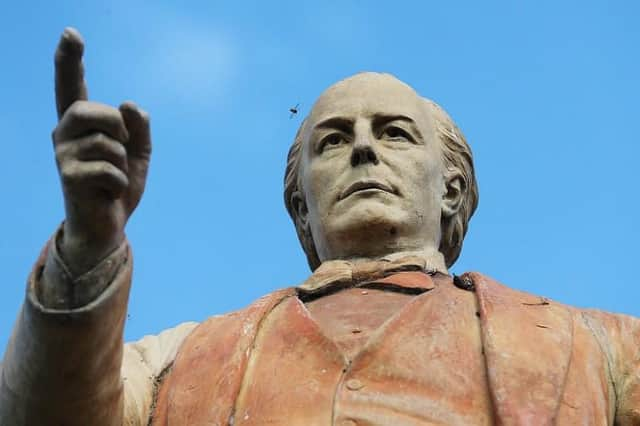RACHEL McGRATH COLUMN: Plaques honour our heritage


I’ve spoken in this column before of their links to Northampton. The new plaque scheme by English Heritage intends to recognise groups, rather than just individuals, who have made their mark on history, in the case of the Matchgirls, improving women’s rights and employees’ rights at work.
The Matchgirls worked at the Bryant and May factory in London’s East End during the mid-1800s through to the early 20th century under the most terrible conditions, including being at risk of ‘phossy jaw’, a form of bone cancer due to the white phosphorus in the chemicals they were handling in the factory.
Advertisement
Hide AdAdvertisement
Hide AdSome 1,400 women and girls walked out in protest and had their demands met after three weeks of negotiations with management. You can find out more about their story via the Matchgirls Memorial Charity website, who are also campaigning for a future statue, at www.matchgirls1888.org
Without wishing to pun on matches and strike(rs) et al, Sam Hoskins, professional footballer at Northampton Town, happens to be the great great grandson of one of the lead Matchgirl campaigners, Sarah Chapman.
He said: ‘It is brilliant news to hear that a blue plaque is to be put up to honour the Matchgirls.
“I am particularly proud of the role my great great grandmother played in helping bring the strike to a successful conclusion.
Advertisement
Hide AdAdvertisement
Hide Ad“As a result of the strike, they formed a new union and Sarah became their first delegate to the Trade Union Congress.
“Of course, we should not forget the involvement of Northampton’s own MP, Charles Bradlaugh, who was supportive of the Matchgirls’ plight.”
On the subject of football, 1888 was also the year that the Football League was established and Walter Tull was born. He went on to play for Northampton Town and is commemorated as one of five bronze statues in Northampton’s Guildhall, commissioned to sculptor Richard Austin.
He is duly noted for his role as the first black officer to lead British soldiers into battle during World War One, where he was killed.
Advertisement
Hide AdAdvertisement
Hide AdIt was only last year that Walter Tull was inducted in the English Football Hall of Fame of the National Football Museum.
Indeed it was also Charles Bradlaugh, MP of Northampton, who campaigned alongside others in the House of Commons to ensure that the women and girls’ plight was heard in terms of their terrible working conditions.
Charles Bradlaugh was originally born in the East End of London before serving Northampton borough as a Liberal MP. There is a notable statue of him just outside Northampton town centre situated on the traffic island at Abington Square.
Heritage plays an important part of our shared history and sense of belonging to a place.
Advertisement
Hide AdAdvertisement
Hide AdNotwithstanding, nor forgetting, that true Northampton icon, Baffle the Badger, who somehow fell through the ceiling of the Superdrug store in the Grosvenor Centre, whilst sheltering from Storm Ciara in 2020 and received its own blue plaque near the shopping centre entrance!
There are also currently a further four blue plaques in Northampton: for maker of crossbows Peter the Saracen; shoe manufacturer William Barratt; anti-poverty campaigner and Northampton’s first female councillor, Rose Scott; and former mayor Joseph Gurney.
To find out more about exploring local heritage across the county do visit: www.northamptonshiresurprise.com